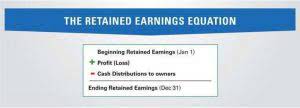Embrace an organized system that reduces confusion, saves time, and ensures efficient order fulfillment. To simplify the counting process, divide the inventory into manageable sections or zones. Assign teams to count specific sections, reducing the risk of errors and making the overall process more efficient. Businesses can better anticipate customer needs, align production capacities, and optimize resource allocation. It helps in detecting and addressing inventory shrinkage caused by theft, damage, or administrative errors.
The system automatically assigns ticket based on the type, location or asset selected. For starters, employees responsible for stocktake should know about training dates, when to work extra shifts and how to perform a count. Once your request is submitted, a fulfillment expert will get back to you within 1-2 business days. In this blog, we’ll unpack the concept, significance, and various methods of Physical Inventory Count, laying the foundation for an in-depth exploration of its complexities. They are legally mandated for publicly traded companies and play a pivotal role in theft deterrence and operational enhancement.
Physical Inventory 101: What It Is & How to Count Physical Inventory
Each item is counted and recorded for accounting, tax, or future decision-making reasons. Timely identification and correction of inaccuracies are crucial to maintaining the integrity and reliability of inventory data, which are vital for informed business decisions and maintaining customer satisfaction. The need for labor-intensive physical recounts and the potential for increased operational costs further compound the challenges.
- Set up a system to automatically replenish inventory when it reaches a certain level to ensure that items are always in stock and available for customers.
- Proper planning and coordination with relevant personnel can help address this issue.
- Physical inventory is important in accounting because it provides an accurate and up-to-date record of a company’s inventory.
- Maintenance, repair, and operations (MRO) refers to the tools and equipment used for the maintenance, repair, and running of production required to manufacture finished goods.
- Despite being a rather tedious process, inventory counts are essential to any business that sells tangible goods.
If there are significant discrepancies, consider a recount what is physical inventory or additional employee training. Accurate inventory counts are critical for reordering products and making informed financial decisions. To make the counting process smoother, restock as much inventory as possible on the sales floor before the count begins.
The results of the cycle counts are compared to the inventory records in the company’s database. If there are any discrepancies, the company investigates to determine the cause and corrects the inventory records as needed. This ongoing process helps to ensure that the inventory records are accurate and up-to-date, reducing the risk of stockouts and excess inventory. Using the ABC analysis concept, Amacon Manufacturing can optimize its inventory management process, reduce waste, and improve profitability.
Best Practices for Conducting Physical Inventory
Variance analysis is a crucial component, comparing physical counts with recorded inventory levels to identify discrepancies and potential errors in the system or processes. These methodologies work in tandem to streamline the physical inventory process and ensure the accuracy of inventory records. Using the cycle counting concept, HappyMe Retail can manage its inventory more efficiently and effectively, ensuring that the right products are available for customers while minimizing costs and waste. In addition, the ongoing cycle counting process helps to catch any discrepancies early on, reducing the need for more time-consuming and expensive physical inventory counts.
To implement cycle counting, HappyMe Retail sets up a schedule for counting different inventory sections. For example, the company may count all the t-shirts in the store in one week, while the next week, it may count all the shoes. The counting is done during business hours, and the inventory is organized so that it is easy to count and track. For example, “A” items are counted every week, “B” items are counted every month, and “C” items are counted every quarter. ABC analysis involves categorizing inventory items based on their value or importance to the business.
Developing Standardized Procedures and Training
This allows for issues to be caught quickly, and fixed before they snowball into large problems. To ensure seamless data flow, make sure to select compatible inventory management systems and establish robust data synchronization protocols. With the right inventory management solution, businesses can leverage real-time data synchronization to mitigate data integration issues, and provide accurate, up-to-date information. Transitioning from manual counts to automated processes significantly enhances accuracy and efficiency.
How frequently should organizations perform a physical inventory count?
This not only enhances operational efficiency but also minimizes stockouts and overstock situations, leading to improved customer satisfaction and cost savings for the business. Physical inventory is the process of physically counting and checking the number of items or assets a company keeps. It is important to ensure accurate financial reporting and effective inventory management. In this article, we will discover various aspects of physical inventory count, its best practices and tips, and how it helps maintain accurate account records.
- Physical Inventory Count serves as the ultimate arbiter, reconciling digital records with tangible reality.
- Physical inventory counts can be time-consuming, particularly for businesses with large and diverse inventories.
- We’ll e-mail you our Free Special Report and keep you posted on how APS can help you save time and money with your product fulfillment with our free e-letter, Fulfillment Best Practices, sent to your inbox regularly.
- Once your analysis is complete and you’ve recorded the results, reconcile inventory levels so that what’s in-store and what’s recorded in your POS system match.
- Meeting customer demands without delays leads to improved customer satisfaction and loyalty, which can positively impact brand reputation and repeat business.
This method is particularly useful if you want to close off sections of the store one at a time rather than shutting down the entire store. Connect with our sales team to learn more about our commitment to quality, service, and tech-forward fulfillment. Ask us about our customized fulfillment solutions, dedicated account manager support, and best-in-class order management platform. Our customers have access to a broad network of industry partnerships, EDI connections, retailer relationships, ERP, and ecommerce integrations.
Dependable Customer Support
Electronic counting methods enable accurate real-time inventory counts, which makes inventory optimization much easier. Physical inventory is a process where a business physically counts its entire inventory. Businesses may use several different tactics to minimize the disruption caused by physical inventory. Consider using technology, such as barcode scanning or RFID, to improve the accuracy and efficiency of the physical inventory count. Overall, the type of physical inventory count a business chooses will depend on its inventory management needs, resources, and goals.
Provide clear instructions on the type of stock check being conducted and where to record the results. Counting physical inventory might seem like a daunting task, but there are ways to streamline the process, so that you’re not spending all your time counting inventory and updating records. Maintain good communication between inventory managers, purchasing managers, and sales staff to ensure inventory levels align with sales and customer demand.
Tag counting is the same as an inventory cycle count or full count, simply with tags assigned to products. Counters add product info to each tag, and at the end of the count, staff checks the tag information against system data. You may also choose to invest in a perpetual inventory management platform or ERP software (see benefits of ERP). These platforms offer access to data at all times and automatically update as products are added or removed from your inventory. Counting inventory is just part of doing business, but it doesn’t have to be a headache. Using an inventory management system like HashMicro’s helps ensure you’ve got the right stock in the right places to meet customer demand without stress.











